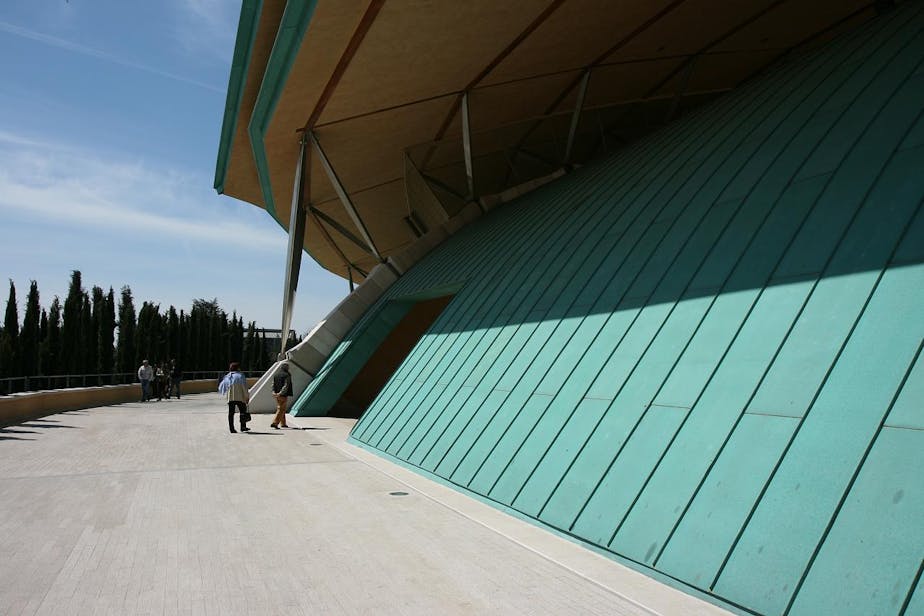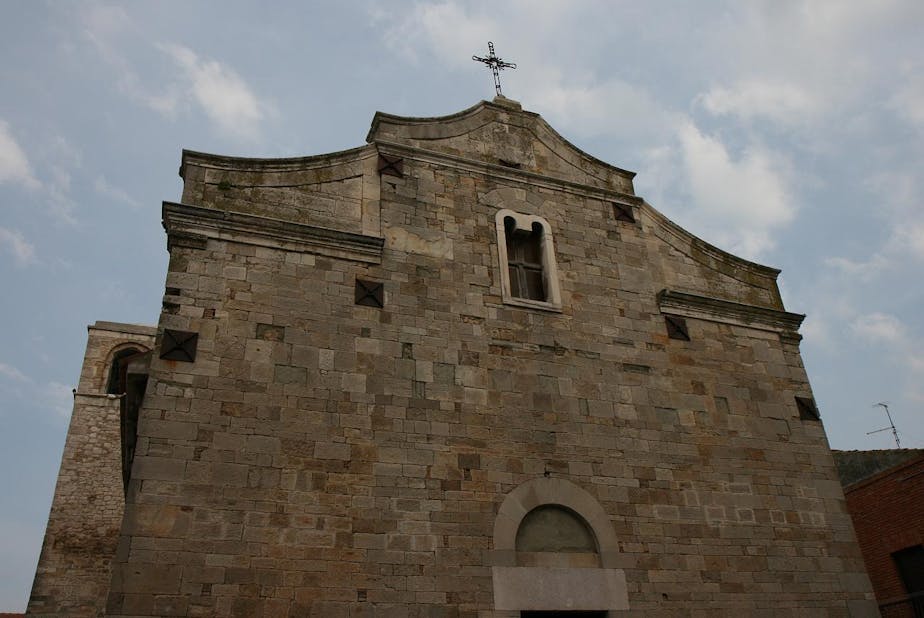Greetings from rainy Ruvo di Puglia! More on our current base soon, but first I have to back up to Monday (March 31) because it was really fun and interesting. We spent a long but good day of driving to three sights from our base in Lucera: San Giovanni Rotondo, Monte Sant'Angelo and Troia.
San Giovanni Rotondo
First up was the town of San Giovanni Rotondo, home to the shrine of a miracle-working monk named Padre Pio (died 1968, canonized 2002). I believe it is the second-most popular Catholic shrine in Europe after Lourdes in France. It is on the "spur" of Italy's boot and was about an hour's drive east from Lucera, mainly on a hilly country road.

This shrine was particularly interesting because the saint lived so recently and he was revered immediately after his death. That meant that absolutely everything associated with him was perfectly preserved! But first we visited his tomb, which is of course the most important stop for pilgrims. It's in the crypt below the main church.

We stood quietly in the crypt for awhile and watched people stand patiently in line (this is unusual for Italians) to touch and kiss the wooden cover of his tomb.

Then we visited his little monastic cell and veranda (above), both preserved inside solid Plexiglas enclosures, and peered into shelf after shelf of his belongings - from rosaries and crucifixes to stacks of brown socks to stained pillowcases. David enjoyed looking at Padre Pio's pocketknives and I liked his soap. Since the Padre died in 1968, it was all like a perfectly preserved time capsule of the 1960s. Very interesting. The only thing we didn't see was his underwear - thank heavens there are some limits!



Amazingly, we had all these sights mostly to ourselves. A large, well-attended service was just concluding when we arrived but they must have seen everything already because they didn't join us afterwards. There were quite a few people at his tomb, but even that wasn't crowded.


But down the hill behind it is a huge modern church (the "Padre Pio Pilgrimage Church") built in 2004 to accommodate the throngs of pilgrims. It has some really wacky architecture! It reminded me of the Rose Garden arena, crossed with a green spaceship.



Another modern addition is a "Via Crucis" or Way of the Cross. Pilgrims love to climb stairs, and this was built for them. It was a lovely setup, ascending up a forested hillside and along landscaped gardens. Processions happen here several times a day.

 Padre Pio doing the robot at the base of the stairs.
Padre Pio doing the robot at the base of the stairs.


After making the full pilgrim route, we headed down into the town to find some lunch. We found a basic pizzeria where I got a delicious cheese pizza and David had seafood spaghetti that he said was one of the best he'd ever had. And all very cheap.


Then we hiked back up the hill to our car, past countless kiosks of Padre Pio paraphernalia, and set off for our next destination...

Monte Sant'Angelo
Monte Sant'Angelo is about 30 minutes further east on the highest point of the Gargano peninsula. The village grew up around a shrine said to have been founded in the 6th century AD, when St. Michael the Archangel appeared several times to a local bishop. It was a major pilgrimage destination in medieval times (St. Francis of Assisi was one of many who came here) and still is today, though it has been overshadowed by San Giovanni Rotondo in recent decades.

It's a very cool site, as it centers on a cave that is approached by two flights of descending stairs. The stairs and hallway that lead to the cave mostly date from the 1200s and there are interesting frescoes and statues along the way.








Troia Cathedral
From there we had a fairly long drive all the way back to Lucera, which we passed right by and drove another 10 miles down a pot-holey road to the small town of Troia. We were there to see its Romanesque cathedral but we also had a fun diversion along the way.


On the way to the cathedral we caught a glimpse of another old church (San Basilio) down a narrow alleyway, and decided to check it out. There we were intercepted by a tiny old woman standing in a doorway, who insisted on showing us the church herself. She gave us an animated guided tour in loud and fast Italian - our apologetic no parla Italiano seemed to be entirely irrelevant.


She was so funny. She dragged me by the arm to show me the sacristy and its fine wood, then smacked David repeatedly while enthusiastically explaining the subject of a particular painting.
After awhile we managed to gracefully extricate ourselves with many grazies, and made it to the cathedral before the sun went down.








On our way out, we rewarded ourselves for our long day of "work" with a nice gelato. Then it was a short drive back to our hotel in Lucera.
Tuesday: Stuck in Lucera
We didn't love our base in Lucera. The town was generally pretty ugly and had a dodgy feel to some parts of it, although it certainly could have been worse. Our hotel was a veritable palace relative to its surroundings and was clean and safe, but the room was rather small, the decor was very bad, and the hotel restaurant was closed either for the season or indefinitely. The lack of a restaurant really sucked because there were virtually no options around the hotel, either.
Since we knew our next hotel and town were going to be nicer, we tried to leave Lucera a night early. We crammed the above three sights into one day and I was all set to book an extra night at our next hotel when we got home. It had been available that morning, but by the evening it was unavailable! Bummer. So we were left with another full day in Lucera with nothing to do. But thankfully we had an excellent internet connection so I spent the day processing photos, taking care of website stuff, and writing the previous blog post. Meanwhile, David went for a longish walk to a supermarket and got us well-supplied with snacks and sandwich makings.
So it all turned out okay. I would still recommend the hotel as a good base for the fantastic sights nearby, but only for one or two nights. And now we are in a lovely hotel in Ruvo di Puglia and very happy!
